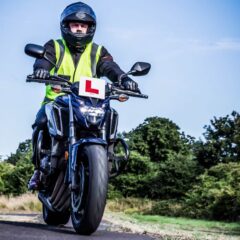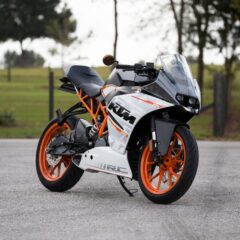
7 Top Motorcycle Accessories
With Christmas just around the corner, you might be wondering what to get your favourite motorcycle enthusiast or even a little something for yoursel...
 Phoenix Motorcycle Training LTD
Phoenix Motorcycle Training LTD
 Phoenix Motorcycle Training LTD
Phoenix Motorcycle Training LTD

If you’re attracted to the two-wheeled form of transport, this beginner’s guide to motorcycling is for you. As with most new pursuits, there’s a lot to get your head around when you start riding a motorcycle. Licencing, safety equipment, and the machine you want to ride are just the beginning. You’ll also need to get to grips with details like insurance, basic maintenance of your motorbike and improving your skill.
In this article, we’ll take a brief look at each element to create for you a beginner’s guide to motorcycling that you can refer back to as your skills grow.
So you’ve decided you want to ride a motorbike. It could be to cut your commute time and cost. Or maybe you want to enjoy the freedom of the road on weekends. The kind of riding you want to do will determine the type of motorbike you’ll buy. That and the level of licence you’re able to achieve.
If you’ve never ridden a motorbike before or don’t hold a licence, chances are you’ll need to get a provisional licence to start with your CBT – Compulsory Basic Training. If you’re 16 a CBT is the first step to a full motorcycle licence. For people who are a little older and got their car licence before the 1st of February, 2001, they’re able to ride a moped up to 50ccs. If you want to ride something with a bit more grunt, you’ll need to get your CBT certification. Then you can test for the level of licence appropriate for your age and the power of the bike you’re dreaming of.
The motorcycle licencing path is a winding one, which branch you take depends on your personal circumstances.
The good news is that you don’t need to go and buy your first set of wheels until you’ve got your licence – all motorcycle training schools should be able to supply the right powered bike for your training.
Congratulations on joining more than 1 million other motorcyclists on UK roads! Now’s the time to buy the right wheels and make sure you have the best kit you can afford – safety should be your top priority.
When going for your first bike, it’s important to make sure that it fits. There’s no need to buy new, but do shop around and don’t purchase anything before sitting on it first. If you’re not comfortable on a motorcycle and able to have both feet flat on the floor when seated, it’s not the right motorbike for you.
Just as important as your wheels are your safety equipment. Prioritise helmet, gloves, boots and jacket. Legs and feet have the highest injury rates for non-fatal motorcycle accidents. This is followed by your head and neck. Our natural instinct to put our hands out to break any fall means these delicate parts of our body need proper protection too. Don’t skimp on your gear, don’t buy a 2nd hand helmet, and don’t ride without protection. These are the golden rules when it comes to motorcycling kit.
Just as with a car, if you’re riding on the road, you’ll need to be insured. Lower-powered bikes cost less to insure but inexperienced riders may have a higher excess. Shop around for a deal that works for you. It’s good to be aware that some insurers give better rates to riders who have advanced rider certifications, so keep this in mind as you gain experience. You can find some good deals online.
As well as insurance, it’s good to have an idea about the general maintenance of your motorcycle. If you’ve bought a second-hand bike, ask for the user manual. If the seller doesn’t have one, make sure you get it online or from the manufacturer. This will let you know what the tyre pressure should be, as well as where and how to check oil, brakes, coolant, and spark plugs. Other checks include ensuring your chain is lubricated and the correct tension, the anti-freeze is at the right level and your lights are working properly. If don’t know how to do any of these things, check your maintenance book. Clips on YouTube should be able to teach you a little more too. Maintaining your motorcycle is important for safety and comfort.
With each ride, you’ll learn a little more. You’ll notice the physics of motorcycling are very different from driving a car. But as with any skill, to really improve you need to keep training. Just like your professional development, taking a brief course each year is a great way to improve your skill. It may be the last step in our beginner’s guide to motorcycling, but it doesn’t make it any less important.
Some courses such as Biker Down or Bike Safe are free or of minimal cost. They focus on safety and first aid. Other advanced courses cost a little more but help you improve specific skills. Things like lowering your fuel consumption and increasing enjoyment on the road are parts of advanced rider training.
If you have the time and want to include some different types of riding, think about track days or tours that take you somewhere new. This way you can have a fun motorcycling break and gain insight and skill to use in your everyday riding.

With Christmas just around the corner, you might be wondering what to get your favourite motorcycle enthusiast or even a little something for yoursel...

If you love motorcycle riding, you’ve probably daydreamed about riding a motorbike for a living. A professional racer or stunt rider is OK for some...

Getting a UK motorcycle licence can seem a complicated process. Particularly when compared to a driving licence for a car. Whether you choose the pro...
This website uses cookies to personalise content, ads, and analyse traffic, sharing data with partners who may combine it with other information. See our Privacy Policy for more information.